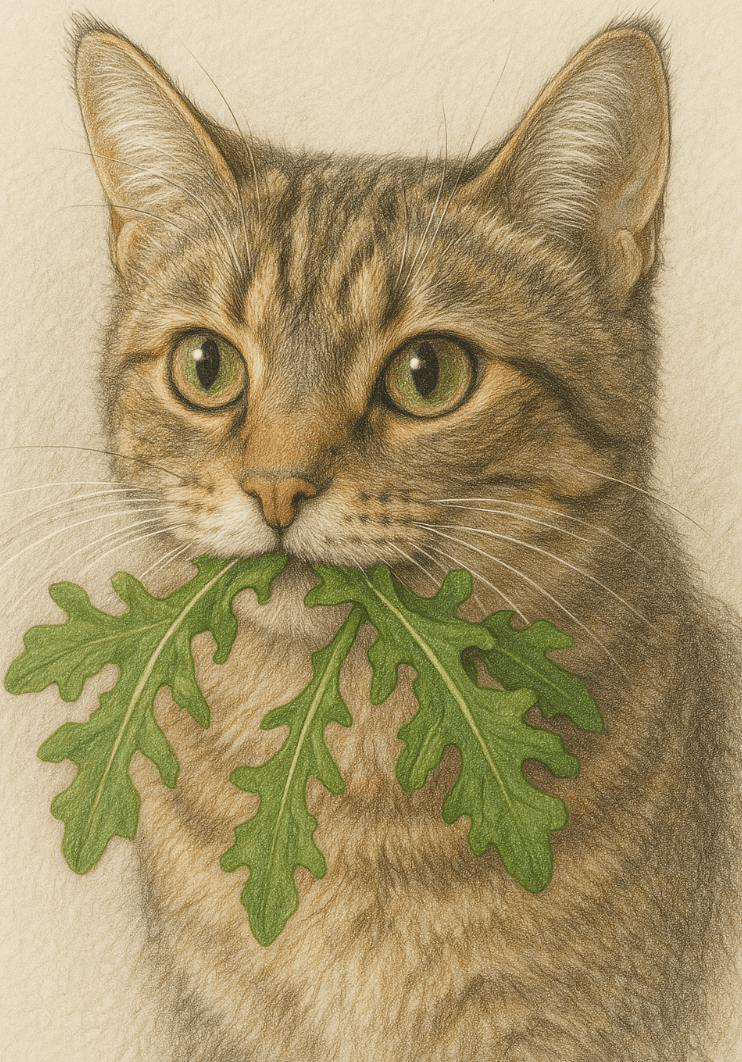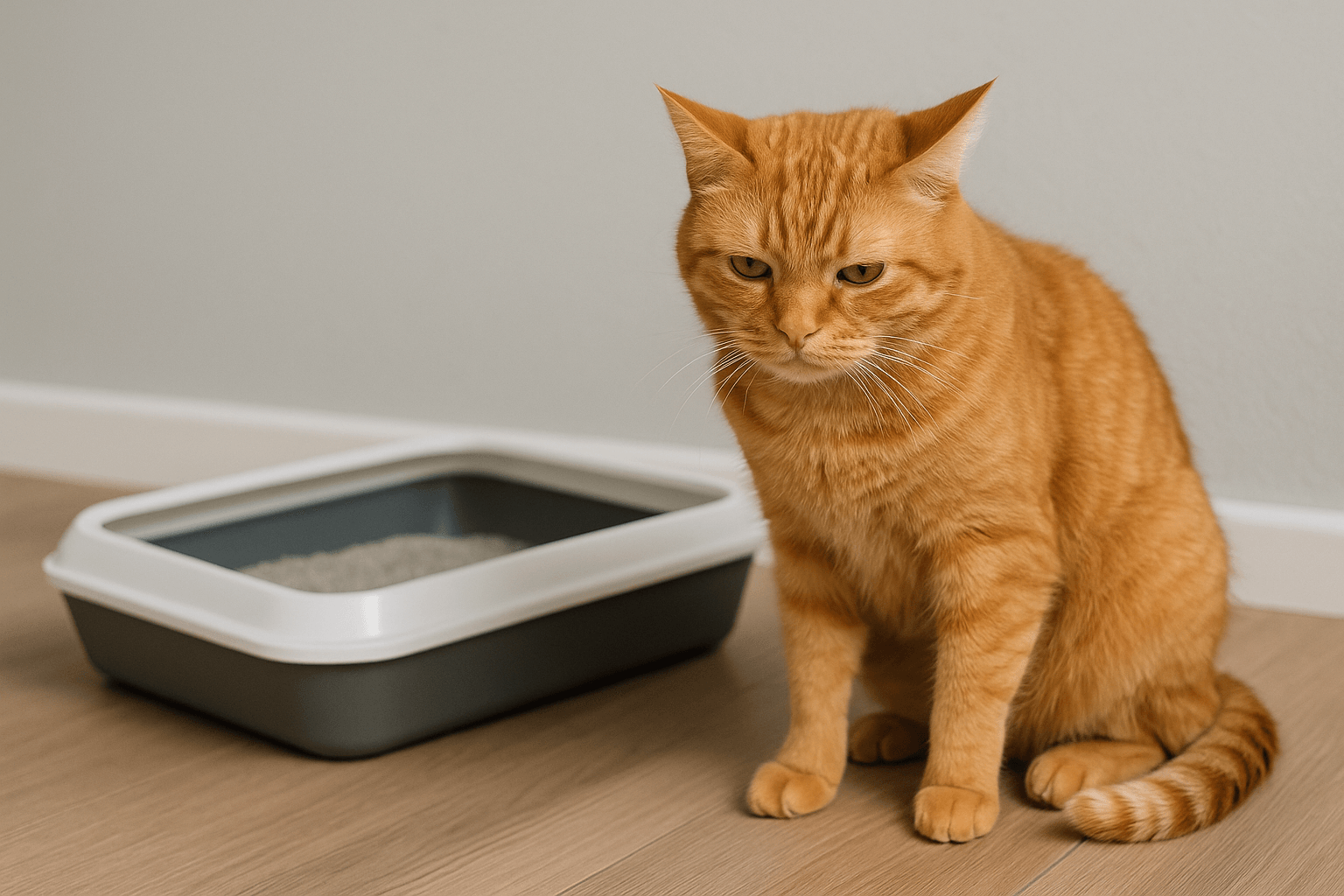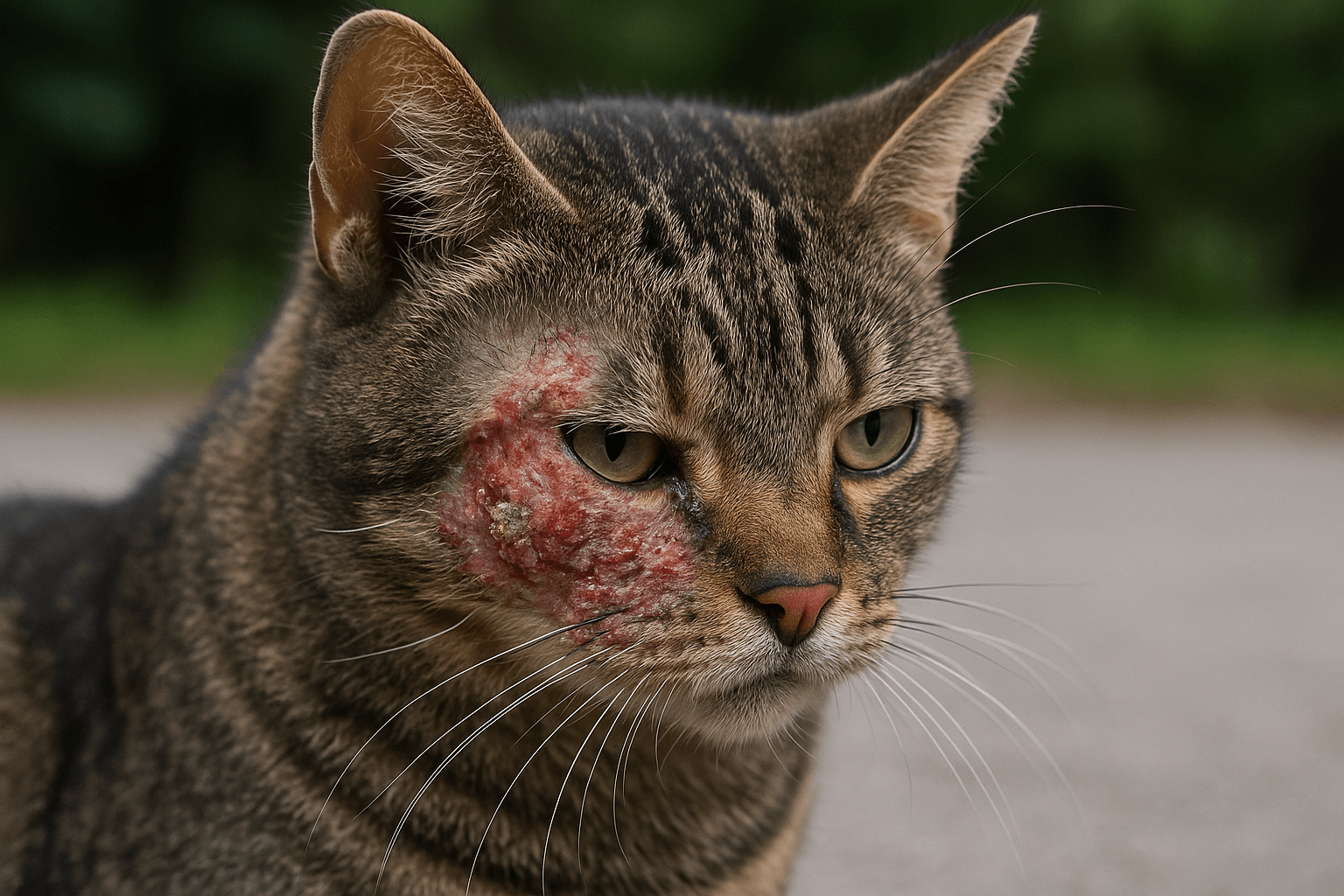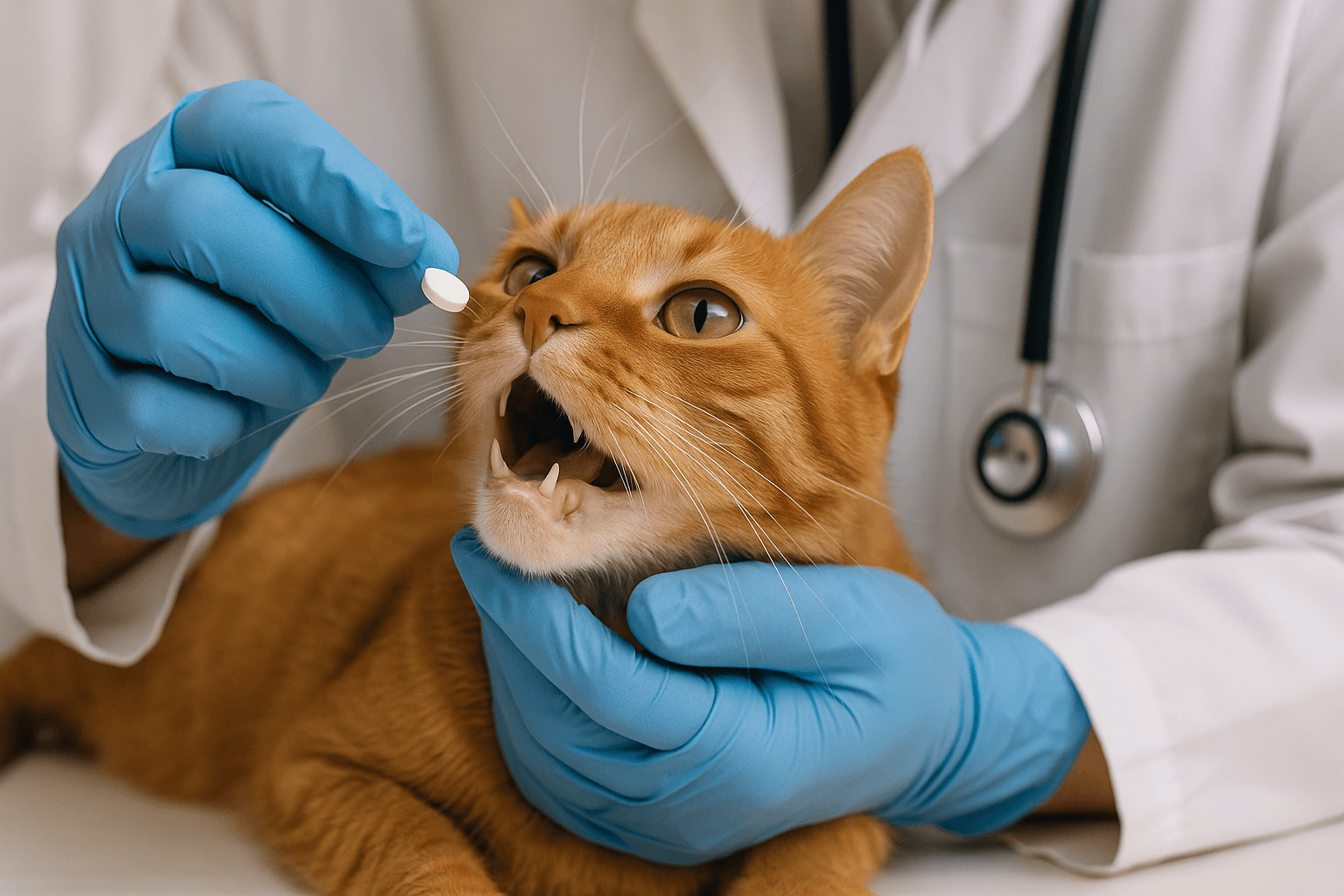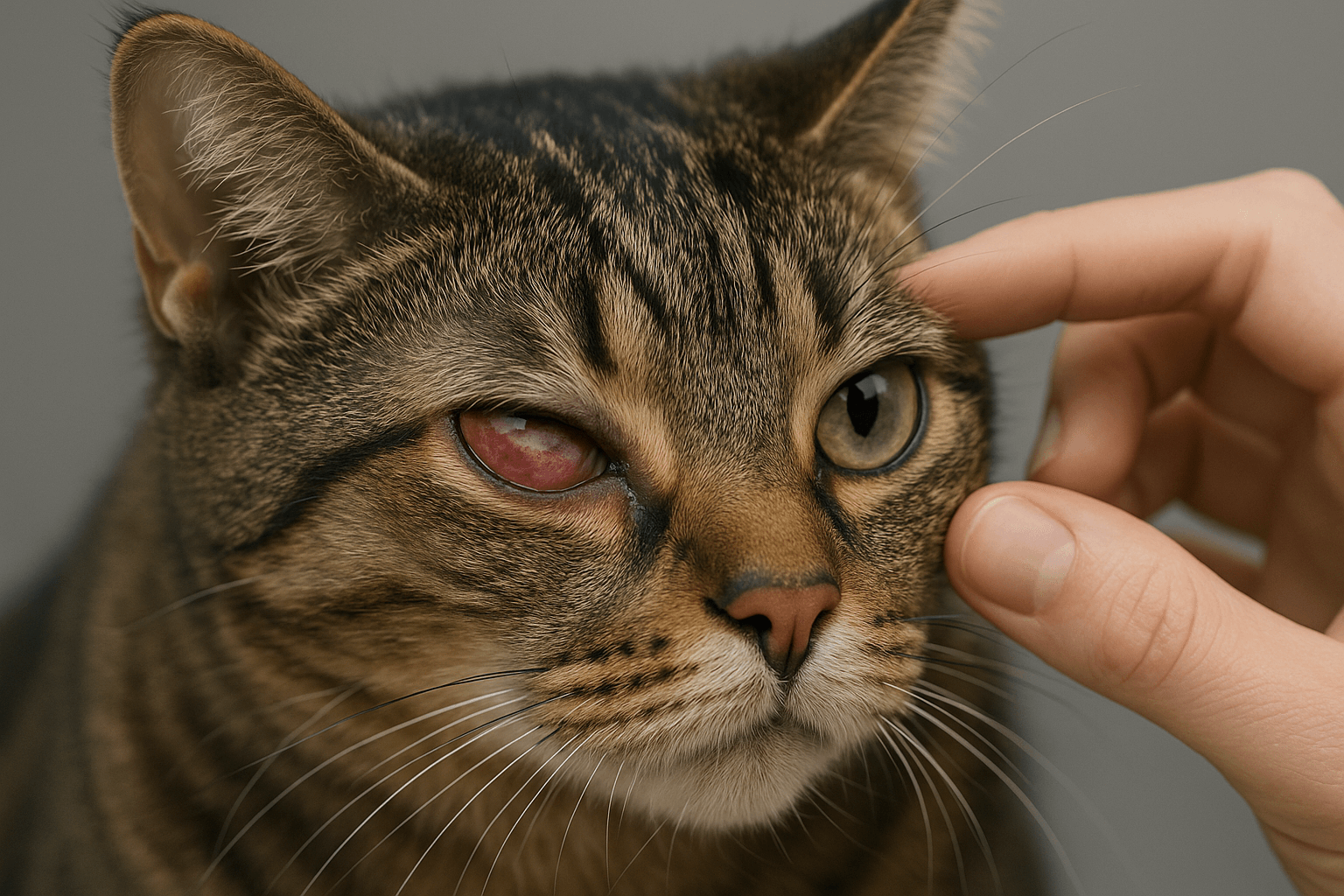Can Cats Eat Arugula?
As cat owners, we often wonder whether certain human foods are safe for our feline companions. One such question that arises is: Can cats eat arugula? Arugula, also known as rocket, is a leafy green vegetable packed with nutrients like vitamins A, C, and K, as well as calcium and iron. While it’s a healthy addition to our salads, the dietary needs of cats differ significantly from ours. Understanding whether arugula is safe, beneficial, or potentially harmful to cats is essential for ensuring their health and well-being. In this blog post, we’ll explore everything you need to know about feeding arugula to your cat, including its risks, benefits, and safer alternatives.
Is Arugula Safe for Cats?
Before offering arugula to your cat, it’s important to evaluate its safety. While arugula isn’t toxic to cats, there are several factors to consider before including it in their diet.
Non-Toxic but Low Nutritional Value for Cats:
Arugula is not poisonous to cats, but it offers minimal nutritional benefits since cats are obligate carnivores and derive most of their nutrients from animal-based sources.Potential Digestive Upset:
Some cats may experience mild stomach discomfort, such as vomiting or diarrhea, after consuming arugula due to its fibrous nature.Risk of Pesticides or Contaminants:
Store-bought arugula may contain pesticides or chemicals that could harm your cat if ingested. Always wash it thoroughly before offering it.Moderation is Key:
Even safe foods can cause issues if fed in large quantities. Limit arugula to small amounts as an occasional treat rather than a regular part of their diet.Allergic Reactions Are Rare but Possible:
While uncommon, some cats may have sensitivities or allergic reactions to arugula, so monitor them closely after feeding.
While arugula isn’t inherently dangerous, it should be offered sparingly and only after consulting your veterinarian.
Potential Benefits of Feeding Arugula to Cats
Although cats don’t require vegetables in their diet, arugula does offer some minor benefits when fed in moderation. These advantages are worth considering if you’re curious about introducing greens to your cat’s menu.
Hydration Support:
Arugula contains a high water content, which can help keep your cat hydrated, especially if they don’t drink enough water.Antioxidant Properties:
The antioxidants in arugula, such as vitamin C, may contribute to overall immune system health in small amounts.Low-Calorie Snack Option:
For overweight cats, arugula provides a low-calorie alternative to commercial treats without adding extra fat or sugar.Mental Enrichment:
Offering small amounts of arugula can provide sensory stimulation and encourage natural grazing behaviors.Encourages Variety in Diet:
Introducing safe greens like arugula can add variety to your cat’s diet, making mealtime more interesting.
While these benefits exist, they should be weighed against the potential risks and your cat’s individual preferences.
Check this guide 👉Can Cats Eat Edamame? Best 7 Expert Tips!
Check this guide 👉Can Cats Eat Pecans? Best 7 Expert Tips!
Check this guide 👉Can Cats Eat Pretzels? Best 7 Expert Tips!
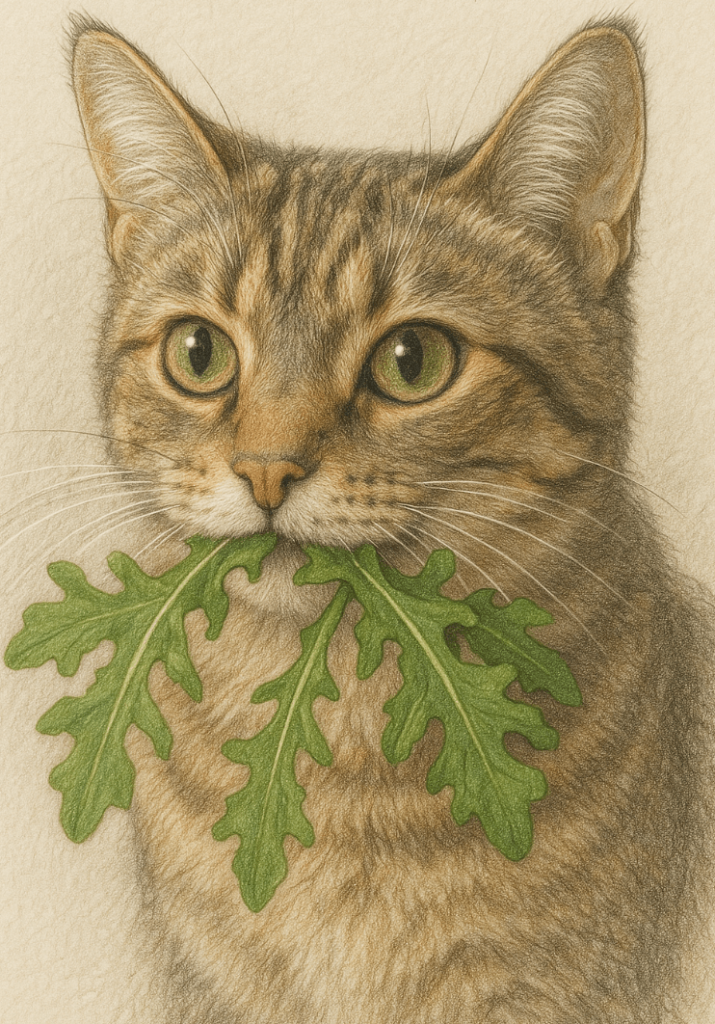
Safe Vegetables for Cats | Vegetables to Avoid for Cats |
|---|---|
Arugula (in small amounts) | Onions and garlic |
Zucchini | Grapes and raisins |
Pumpkin (plain, cooked) | Chives |
Spinach (occasionally) | Raw potatoes |
Green beans | Avocado |
How to Safely Introduce Arugula to Your Cat
If you decide to offer arugula to your cat, it’s crucial to do so safely and responsibly. Follow these guidelines to minimize risks and ensure a positive experience.
Start with Small Portions:
Offer a tiny piece of arugula first to see how your cat reacts before giving larger amounts.Wash Thoroughly:
Rinse the arugula under running water to remove dirt, pesticides, or contaminants that could harm your cat.Serve Plain and Unseasoned:
Avoid adding salt, oil, or dressings, as these can upset your cat’s stomach or introduce harmful ingredients.Monitor for Adverse Reactions:
Watch for signs of digestive upset, allergies, or disinterest after feeding arugula. Discontinue if any issues arise.Consult Your Veterinarian:
Always check with your vet before introducing new foods, especially if your cat has pre-existing health conditions.
By following these steps, you can safely determine whether arugula is suitable for your feline friend.
Signs Your Cat May Not Tolerate Arugula
Not all cats will enjoy or tolerate arugula, and some may exhibit adverse reactions after eating it. Knowing the warning signs can help you act quickly if something goes wrong.
Vomiting or Diarrhea:
Gastrointestinal distress is a common reaction to unfamiliar or fibrous foods like arugula.Loss of Appetite:
If your cat refuses to eat after trying arugula, it could indicate discomfort or an aversion to the taste.Excessive Drooling:
Drooling may suggest irritation in the mouth or throat caused by the texture or compounds in the arugula.Lethargy or Weakness:
A sudden lack of energy could signal a more serious issue, requiring immediate veterinary attention.Swelling or Itching:
Allergic reactions may manifest as swelling around the face or persistent scratching.
Recognizing these signs allows you to respond promptly and prevent further complications.
Common Mistakes to Avoid When Feeding Greens to Cats
Feeding greens like arugula to your cat requires caution to avoid unintended consequences. Here are some common mistakes to steer clear of.
Overfeeding Greens:
Too much arugula or other greens can lead to digestive upset or nutrient imbalances in your cat’s diet.Adding Seasonings or Dressings:
Ingredients like salt, oil, or vinegar can irritate your cat’s stomach and should never be included.Ignoring Allergies or Sensitivities:
Not all cats tolerate greens well; failing to recognize adverse reactions can lead to health issues.Forgetting to Wash Produce:
Skipping the washing step risks exposing your cat to harmful pesticides or bacteria.Replacing Balanced Meals with Greens:
Greens should complement—not replace—a nutritionally complete diet designed for cats.
Avoiding these mistakes ensures a safer and healthier approach to feeding greens.
Alternatives to Arugula for Cats
If arugula doesn’t appeal to your cat or you’re looking for safer alternatives, consider these cat-friendly options instead.
Cat Grass:
Specifically grown for cats, this blend of grasses satisfies their natural urge to chew on greens safely.Plain Cooked Pumpkin:
High in fiber, pumpkin can aid digestion and is a favorite among cat owners for picky eaters.Zucchini:
Mild in flavor and easy to digest, zucchini makes a great occasional treat for cats.Green Beans:
Low in calories and rich in vitamins, green beans are a nutritious option for cats who enjoy vegetables.Cucumber Slices:
Hydrating and refreshing, cucumber is another safe choice for cats who like crunchy textures.
These alternatives provide variety without compromising your cat’s health.
Understanding Your Cat’s Natural Diet Preferences
Cats are naturally inclined toward meat-based diets, but their curiosity sometimes leads them to nibble on plants. Understanding why they do this helps explain their behavior.
Instinctual Grazing Behavior:
Wild cats sometimes eat grass or plants to induce vomiting and clear hairballs or indigestible materials from their stomachs.Exploration Through Taste:
Cats use their mouths to explore new textures and flavors, which may include experimenting with greens like arugula.Nutrient Seeking:
Occasionally, cats seek out plants for trace nutrients, though their bodies are better equipped to absorb these from animal sources.Boredom or Curiosity:
Indoor cats may nibble on houseplants or greens out of boredom, seeking mental stimulation.Preference for Certain Textures:
Some cats enjoy the crispness of greens like arugula or cucumber purely for the sensory experience.
By recognizing these motivations, you can better cater to your cat’s instincts while keeping them safe.
Frequently Asked Questions About Cats and Arugula
Can kittens eat arugula?
Kittens have sensitive digestive systems, so it’s best to avoid feeding them arugula or any other human food until they’re older.
Is arugula better than other greens for cats?
Arugula isn’t necessarily better than other greens; options like zucchini or pumpkin are often easier for cats to digest.
What if my cat accidentally eats arugula?
A small amount is unlikely to harm them, but monitor for signs of digestive upset and contact your vet if needed.
Can arugula replace cat grass?
No, cat grass is specifically suited for feline consumption, while arugula is less ideal and should be given sparingly.
Should I cook arugula before feeding it?
Cooking arugula removes some nutrients and may add unwanted oils or seasonings, so it’s better served raw and plain.
Prioritizing Your Cat’s Health When Feeding Arugula
While arugula isn’t toxic to cats, it’s not a necessary or highly beneficial addition to their diet. As obligate carnivores, cats thrive on animal-based proteins rather than plant-based foods. However, if your cat enjoys nibbling on greens, arugula can be offered occasionally in small amounts as a safe treat. Always prioritize your cat’s individual needs, monitor their reactions, and consult your veterinarian before introducing new foods. By doing so, you can ensure your feline friend remains happy, healthy, and well-nourished.
Understanding Cystitis in Cats: Best 7 Expert Tips! Discover causes, symptoms, and expert advice to manage feline cystitis effectively and ensure your cat’s urinary health and comfort.
Fungal Infection in Cats: Best 7 Expert Tips! Discover expert advice on identifying, treating, and preventing fungal infections in cats to keep your feline healthy and happy.
Can You Give a Cat Tylenol? Best 7 Expert Tips! Discover why Tylenol is toxic to cats, signs of poisoning, and safe alternatives for managing feline pain effectively.
Cat Eye Irritation: Best 7 Expert Tips! Discover expert advice on identifying, treating, and preventing eye irritation in cats to keep their eyes healthy and comfortable.

